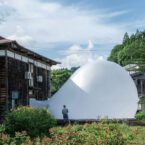
This innovative mud home, constructed with a blend of hemp straw, earth, and water, stands as a testament to the marriage of ancient construction methods and modern energy efficiency standards in the UK. Architect Anthony Hudson, drawing inspiration from centuries-old techniques, successfully built a three-bedroom bungalow in Fakenham, Norfolk, as part of an EU initiative promoting the construction of energy-efficient homes. Named the CobBauge project, the building’s mud walls, made of cob, provide exceptional thermal insulation, meeting contemporary building regulations. The use of mud, a highly sustainable material, harks back to Britain’s historical cob buildings that have endured for over five centuries. Despite being a traditional approach, the construction incorporates 21st-century elements like large triple-glazed windows for solar warmth and an air source heat pump for additional heating, showcasing a harmonious blend of the old and the new.

Hudson Architects, in collaboration with local builders Grocott and Murfit, completed the project in January, emphasizing its cost-effectiveness. The house, with its south-facing windows and environmentally friendly features, aligns with the EU-funded initiative’s goal to promote net-zero carbon construction. While mud construction is not yet ready for mainstream adoption due to labor-intensive methods, Hudson envisions a future where mud homes become the norm. With the upcoming public viewing of the mud house in March, complete with a “green roof” to support biodiversity, the project aims to highlight the potential of sustainable construction and pave the way for more energy-efficient housing solutions in the future.



















